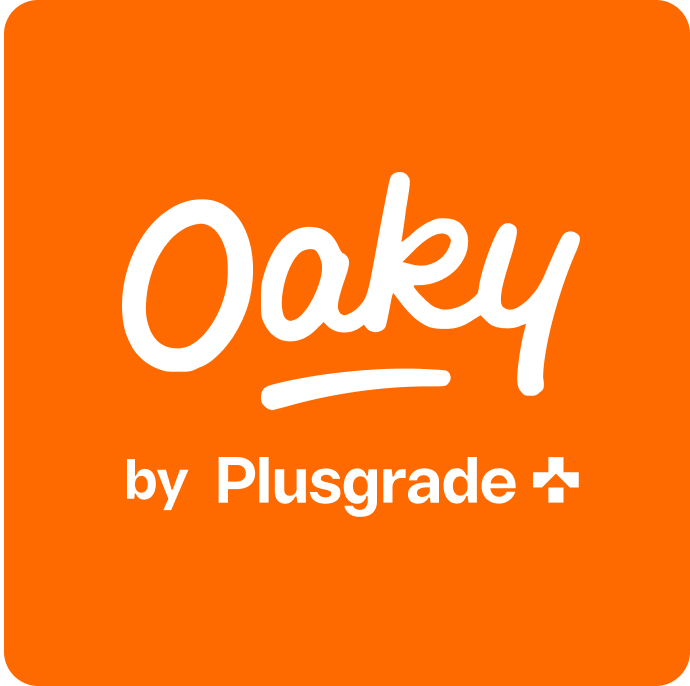Hotel market segmentation: How to appeal to the right guests
Oaky
•

All hotel managers would agree that hotel market segmentation is one of the key components of a viable hotel revenue management strategy. It helps you understand your guest segments and their booking behaviors, enabling you to cater to their unique needs and develop more effective pricing strategies.
Explore how to leverage hotel segmentation and how to find the right segments to target.
What is hotel market segmentation?
Hotel market segmentation is a way of grouping your hotel guests into several segments based on a set of shared characteristics. These characteristics usually include:
The purpose of travel
Group size
Booking source (e.g., OTA, direct bookings or GDS)
Guest demographics
Length of stay.
What are the most common hotel market segments?
Regardless of the type of hotel, you can place your guests into different market segments based on booking patterns, group size, purpose of travel, and more.
The typical division into hotel market segments comprises transient, corporate, and group guests. Let’s zoom in on these three major segments and take a closer look at smaller, more specific market segments to identify their common traits and behavioral patterns:

1. Transient
The transient group segment comprises people who travel individually for leisure or business purposes and don’t belong to any group or company. Transient guests stay for a short period and are more willing to pay for convenience.
They may book through various channels, including OTAs or direct hotel websites. As they usually make last-minute bookings, they might prefer flexible cancellation policies to accommodate their spontaneous travel plans.
2. Free independent travelers (FIT)
FIT travelers prefer to plan their itineraries independently without relying on packaged tours. They actively seek unique, authentic experiences that allow cultural immersion and opportunities for exploration. For example, they’ll prefer off-the-beaten-path attractions over traditional tourist spots.
3. Corporate negotiated rates (CNRs)
This segment refers to business travelers who are part of companies or corporations that hotels have contracts with to offer special rates.
They often prioritize convenience, efficiency in their travel arrangements, and value-added services like Wi-Fi and breakfast. While they have established preferences for specific hotels and amenities because they typically travel regularly, they often look for flexible booking options.
4. Local negotiated rates (LNRs)
This segment includes local businesses, government organizations, and non-profits that require accommodations for their employees, clients, or guests. Hotel managers and revenue managers have agreements with these types of organizations to offer group bookings for training sessions, conferences, or events held at the hotel.
These guests expect not only lower rates but also added perks, such as complimentary breakfast, parking, or room upgrades. These enhancements can make the negotiated rate more appealing and justify the commitment to the hotel.
5. Group
The group segment refers to a group of people who travel together to the hotel and typically request bulk room blocks. They’re often budget-conscious, looking for competitive pricing and value-added services (e.g., free breakfast, complimentary meeting space, and coordinated check-ins). As such, they often receive discounted group rates. On the flip side, as they tend to plan well in advance, hotels can forecast occupancy more accurately.
6. Meetings, incentives, conventions, and exhibitions (MICE)
This segment focuses on business-related events and corporate gatherings, such as workshops, corporate meetings, reward trips, etc. When catering to these guests, you should provide:
A variety of well-equipped meeting spaces that can accommodate different group sizes and setups
State-of-the-art, audio-visual equipment
High-speed internet access
On-site technical support for presentations and events
A dedicated coordinator or event planner to assist with logistics and arrangements.
7. Social, military, educational, religious, fraternal (SMERF)
Part of the group segment, this category includes guests traveling to family reunions, weddings, military gatherings, educational seminars, religious and fraternal gatherings, etc. They’re also budget-conscious, but more so than corporate guests.
Their specific needs include assistance with logistics and venues that can accommodate meetings and social functions.
8. Wholesale
The wholesale segment consists of third-party intermediaries (like travel agencies, tour companies, OTAs or travel management companies) that purchase rooms and services in bulk from hotels at a discounted rate, then resell them to consumers.
While they typically seek lower rates, they can book several room nights, helping hotels fill rooms quickly, especially during low-demand periods.
9. Other
This segment usually includes complimentary rates, industry rates, rates available to the staff and walk-in guests or guests staying through bartering (e.g. travel influencers).
How to identify your hotel target market segments
Kicking off with hotel guest segmentation requires some extra work at the beginning. However, the rewards are well worth it in the long term. Here’s the best way to get started when setting up guest segmentation:
1. Dive deeper into your booking data
To identify and understand the current guest segments that your hotel appeals to, you should turn to data. There are various sources from which you can collect guest data, including some software you use for other tasks that can also serve as data analytics tools, such as:
A property management system (PMS)
Booking channels (direct website bookings, OTAs, GDS, etc.)
Channel managers
CRMs
Hotel upsell software
You can use these tools to look for information about:
Purpose of your guests’ trip
The average length of your guests’ stays
Preferred booking channel
Number of guests
Type of rooms booked
Extra services used
Upgrades and packages.
To dig deeper into guest behavior and preferences, use your hotel upsell software. It will give a much better understanding of which experiences, room upgrades, services, and packages appeal to which segments. Combine this with the data found in your PMS or CRM to get an even more accurate picture of guest satisfaction levels.




2. Run guest surveys
Surveys will allow you to get first-hand information about your guests' preferences and expectations. You can send a survey via email or just ask about your guest’s experience at checkout. The questions that you might want to ask include:
What did you enjoy the most about your stay?
What was the purpose of your visit?
Do you have any suggestions on what can be improved?
How did you learn about our hotel?
Alternatively, you can integrate similar questions into the reservation process on your hotel website. This will give you more information about your guests' needs and expectations, giving you a leg up in preparing a better experience for them.
3. Keep an eye on online reviews
Reviews are a valuable resource for learning about what’s important to your guests. You can also take a look at guest reviews of your competitors if you know that they advertise their services to a similar target market segment.
4. Become a pro user of GA4
Google Analytics 4 (GA4) is a good start for anyone who wants to expand their knowledge about website users (only applicable to a direct booking website). By utilizing Google Analytics, you will get data on where your customers are located, how they land on your website, their demographics, and interests, which you can use to increase direct bookings.
How to attract and appeal to the right guests using hotel market segmentation
Now that you know which guest segments your hotel attracts, let this knowledge work for you. Here are practical ideas for using market segmentation in the hotel industry.

1. Create guest profiles
An essential task is to create detailed guest profiles for each guest segment you’ve identified. This will help you to summarize their characteristics, needs, and preferences better.
For example:
CNR guest: Business travelers focused on convenience, reliable internet, and meeting facilities.
MICE guest: Requires event space, group pricing, and amenities for large gatherings.
FIT guest: Focuses on unique experiences, flexibility, and authentic local interactions.
You can use these guest profiles to identify which services and amenities should be offered or possibly improved. Then, when you’re creating your marketing strategy to advertise your hotel and its offerings, you’ll also use these personas to guide you.
For example, if you target FIT travelers, you might need to add a flexible cancellation policy or a few one-of-a-kind experiences.
2. Match services and room upgrades to each profile
Once you have your guest profiles, align specific services, amenities, and experiences to each one. Let your different hotel rooms, in-room amenities, and hotel facilities guide you when you create possible offers. This exercise will also help you develop customized packages, such as business, family, or romantic packages, etc.
Start with the booking dates and length of stay.
Guests who stay during the week might be keener on an offer for a fancy dinner, which could help fill up your restaurant on slow days.
On the other hand, for weekend stays, a special brunch deal might be more appealing, as they have some time to snooze.
If the guest stays for a whole week (or longer), you can throw in a combination package which could include airport transfers, meals, spa treatments and entertainment. The longer guests stay, the more time they’ll have to try out various facilities.
In addition to looking at the number of nights booked, also look at how many guests are traveling together. For example, single guests can be offered fun social activities to join, while couples traveling without children will appreciate a romantic package. Then, for guests traveling with kids, services like babysitting, hassle-free airport transfer, or child-friendly meals will sound more like an actual holiday.
Lastly, look at where the guests are traveling from as well as where the booking comes from. Guests from some countries are known to book with a long lead time or to spend more money. Offer them exclusive services or special packages for added revenue.
If guests from a certain OTA usually fall into a particular segment, they’re easier to target. On the other hand, direct bookers can be rewarded with extra advantages and discounts.
3. Tailor marketing strategies for each target guest segment
As mentioned earlier, your guest profiles will also inform your marketing efforts, specifically your message. Here are a few examples of how you can use your personas to create targeted marketing campaigns:
Direct email marketing: Send segmented email campaigns based on past stay behaviors and identified preferences. For example, FIT travelers will receive an email that advertises an authentic one-on-one cooking class hosted in the restaurant’s garden, while MICE guests will be sent a message about your recent meeting space renovation.
Social media and content marketing: Create content that speaks directly to each segment. You can, for example, create posts on business travel tips, local experiences for leisure travelers, or event space promotions for MICE.
Targeted promotions and packages: Develop special packages or offers for each segment, like business travel discounts or group booking perks.
4. Refine your revenue management strategy and customize pricing to each segment
Implement revenue management strategies to optimize pricing for each segment. For example:
Offer fixed pricing or discounts based on agreed terms with corporations to your CNR segment
Provide reduced rates for bulk bookings made by third-party agencies
Use dynamic pricing to adjust rates based on seasonality and demand.
Then, to distribute segmented pricing across OTAs, GDSs, and direct channels, leverage channel management software. This is especially important when you’re applying dynamic pricing as it uses advanced algorithms and real-time data analysis to adjust prices. The benefit of this is that you’ll at all times be charging the optimal rate for each guest segment while remaining competitive. This maximizes revenue potential during peak and off-peak periods.
Not only will rates optimized for each guest segment have a positive impact on your bottom line, but also your guests. When guests feel that they’re receiving personalized offers and value for their money, they’re more likely to have a positive experience and return for future stays. By understanding the preferences and needs of each segment, you can design packages and promotions that resonate with their expectations, enhancing overall guest satisfaction and loyalty.
5. Gauge profits and expenses per segment to identify the most lucrative ones
To improve hotel revenue further, you can also use segmentation to optimize guest acquisition costs. By breaking down these expenses by guest segment, you can identify which segments are more cost-effective to target and refine your marketing approach accordingly.
Guest acquisition costs encompass all the expenses involved in attracting a guest to book a stay at your hotel. These can include:
Marketing expenses like advertising, social media campaigns, search engine optimization, and traditional media
Sales team costs
Commissions paid to online travel agencies (OTAs) and other booking platforms, as well as website hosting fees
Promotional offers like discounts, loyalty programs, and package deals.
After working out the acquisition costs per segment, estimate the revenue that guests from this segment can generate. This will include room charges and other ancillary income like spa services.
For example, attracting the MICE segment might mean that you’ll have to offer group discounts (which will increase your acquisition costs). That said, they’ll most likely make use of your restaurant as finding a coffee shop that can accommodate 50 customers for brunch will be too much of a hassle, which will increase the revenue potential.
Now, you can refine your strategies to focus on the most lucrative groups. This will mean that you’ll need to shift more resources toward high-margin segments that yield the greatest return on investment (ROI). For example, if business guests generate more revenue than leisure travelers, consider increasing your marketing spend on corporate partnerships and tailored business offers.
6. Use hotel upsell software to deliver the right offer to the right segment at the right time
As touched upon earlier, hotel upsell software is a great data source. Not only does it offer you the data needed for effective hotel segmentation, but also the tools to put segmentation into practice.
For example, with Oaky’s segmentation, guests are presented with a specific selection of deals via pre-arrival emails at the right time of their customer journey when they’re most likely to proceed with customizing their stay. This brings the following benefits to the table:

Showcasing only relevant offers to specific guest segments: This way, you can easily link segments to specific room upgrades or offers and exclude other segments, keeping your deals relevant.
Fostering guest loyalty: Another advantage is that it has a special selection of deals for loyal guests. Offering special experiences or discounted room upgrades can further foster loyalty by providing an exceptional guest experience.
Customizing pricing to each guest segment: Oaky also integrates with other tools. This way, you can still make use of dynamic pricing that can also be activated per segment. Oaky pulls multiple rates from the software, taking into account the specific guest segment, instead of retrieving a single rate from your revenue management system (RMS).
For instance, a business guest who isn’t part of your loyalty program will see a junior suite at the regular rate, while a loyal guest will have the opportunity to book it at a reduced special price.
Driving revenue and guest satisfaction: Oaky’s segmentation is known for helping hoteliers increase their revenue results and improve personalization.
For example, Elite Hotels of Sweden uses Oaky’s segmentation to drive personalization and revenue. They attract business and leisure travelers, and with Oaky, they can present the right deal to the right segment. Since they’ve started using it at the chain level, room upgrades and service sales increased by 27.7%. What’s more, upsell revenue increased by a massive 63% in 2023.
Sofitel Legend the Grand Amsterdam is another hotel that uses Oaky’s segmentation to personalize experiences. Nearly 5% of their guests upgrade their rooms via Oaky, while 12.2% opt for service deals.
Discover how hotels worldwide use Oaky to personalize guest experiences
Why is hotel market segmentation important? [7 Benefits]
If you’re still not sold that it’s crucial to target segments, here are the main benefits explored:
- Identify new business opportunities
Segmentation allows you to identify specific segments that aren’t targeted optimally. Understanding the unique needs of these niches opens up opportunities to design specialized packages, facilities, and services that can attract these guests and boost your occupancy rate and revenue.
- Personalize your offers and guest experiences
You’ve identified the different target audiences your hotel attracts and come up with a number of engaging offers and add-ons. The main challenge you now face is offering the right offers to the right guests.
Personalizing your offers based on customer profiles can lead to increased conversion rates and enhanced guest satisfaction. Tailored offers show guests that their needs have been considered, which makes them feel appreciated and fosters guest loyalty.
4. Maximize revenue from your most profitable guest segments
Once you dip your toes into hotel target market segmentation, you’ll be able to see how much your guests spend during their stay. This way, you can identify which guest segments are the most profitable and tweak your marketing strategy to maximize bookings from these specific segments.
5. Target the correct audience with your marketing strategies and pricing strategies
Guest segmentation also helps you refine your sales and targeted marketing efforts by choosing the most appropriate strategies. Firstly, by keeping your target guest segments in mind, you’ll be able to select distribution channels where your hotel’s target market is present.
Secondly, based on your target personas, you can create customized marketing campaigns that will resonate with each segment you’re aiming to attract. You can do this through email marketing, social media, influencer campaigns, and digital ads, etc.
For example, you could have one email template for business guests and a separate one for leisure guests featuring different room upgrades and add-on services (and, of course, at different prices).
6. Boost your ancillary revenue
Tailoring your content and offers to relevant market segments can have a significant impact on your ancillary revenue. Based on our analysis of three months' worth of data, segmenting your pre-arrival email communication with a guest can increase your hotel's upselling conversions and revenue. The data speaks for itself:
The deal approval rate increases by 6% (which means fewer request rejections and more satisfied guests)
Service deals are requested 84% more often than non-segmented service deals
Room upgrades are requested 72% more often than non-segmented room upgrade deals.
The data also shows that certain categories of deals see the most uplift in conversion when segmented. These categories include:
Public transport
Parking
Eco deals
Bike rentals
Wellness deals.
7. Boost hotel reputation through positive reviews
Guests appreciate you taking the time to personalize offers for them. As the most relevant offers reach the right guests at the best moment of their customer journey, you can also expect enhanced guest satisfaction. As such, you can see more positive reviews, boosting your hotel’s reputation and brand credibility.
Final Thoughts
Grouping hotel guests into specific segments will initially require more work. However, the long-term benefits of segmentation you’ll enjoy far outweigh the upfront investment.
You’ll possibly discover other hotel market segment examples that your current marketing strategy ignores. Plus, if you dig a bit deeper and do the math, you can identify which segments are the most profitable. For example, group business bookings might just turn out to be more lucrative than FIT travelers or vice versa. You’ll only know once you take the time and implement hotel market segmentation.

